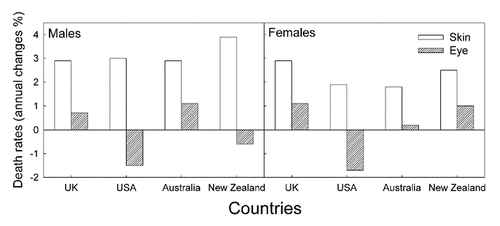Figures & data
Figure 1 Time trends of the incidence rates (IR) of CMM and uveal melanoma in Norway for the period 1993–2004. For CMM over all data (men and women, age adjusted. Rates for persons below 50 years (all country) are shown separately).
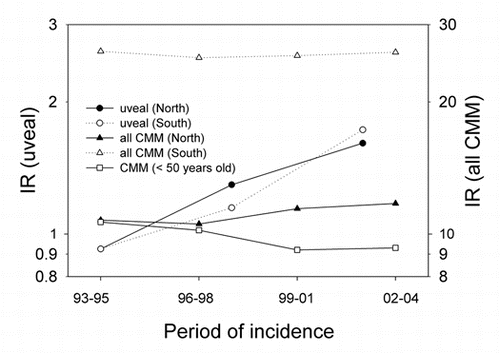
Figure 2 The ratio of the number of uveal melanomas to that of CMM in Norway for three periods. Data shown separately for women and men.
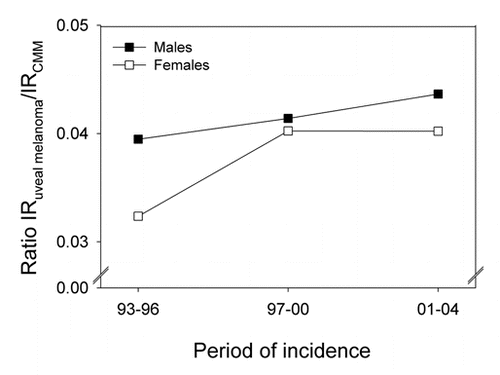
Figure 3 The age adjusted incidence rates (IR) of CMM (per 10,000) and uveal melanoma (per 10,00,000) in Sweden, (A) for men, (B) for women. The ratio of the incidence rates of uveal melanoma to CMM is shown at the bottom of the panels in open triangles.

Figure 4 Age adjusted incidence rates (IR) of uveal melanomas as a function of the incidence rates of CMM (A men, B women) for some countries selected on the basis of our earlier CMM work.Citation12
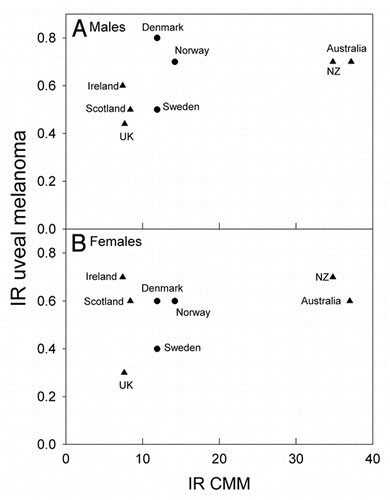
Figure 5 The ratio of the incidence rates (IR) of uveal melanoma to CMM as a function of the incidence rates of CMM for the same countries as those included in .
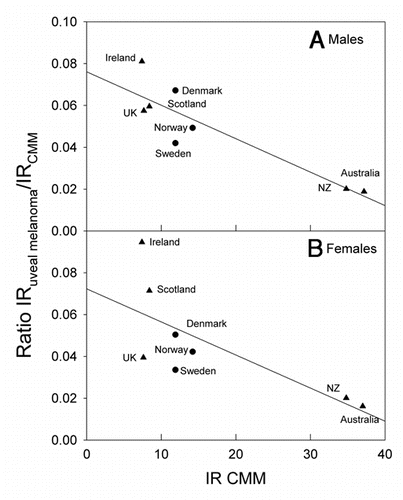
Figure 6 Incidence rates (IR) of CMM per 1,00,000 (A), uveal melanoma per 10,00,000 (B) and the ratio (C) as functions of latitude. Melanoma data were extracted from the work of Virgili et al.Citation38 Data refer to the period 1983–1994 and are from Ragusa (37°C), Tarragona (41°C), Navarra (43°C), Parma (45°C), Geneva (46°C), Slovenia (46°C), Bas Rhin (48°C), Saarland (49°C), CalvadosGen (49°C), Slovakia (49°C), Cracow (50°C), Eindhoven (51°C), West Midlands (53°C), Mersey (53°C), Yorkshire (54°C), Scotland (56°C), Denmark (56°C), Estonia (59°C), Sweden (62°C), Norway (62°C), Finland (64°C) and Iceland (65°C).
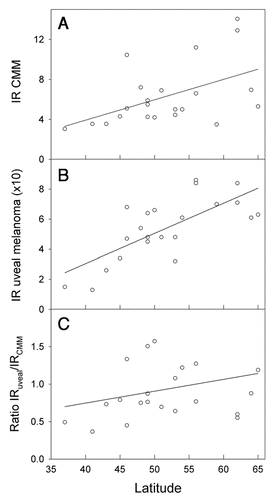
Figure 7 The annual percent changes of CMM and uveal melanomas death rates as taken from references.Citation1,Citation39 Average values for the time period from 1951 to 1978.
